Great Danes are known for their colossal size and gentle nature, often earning them the title of “gentle giants.” These dogs have a unique combination of grace and friendliness, making them a popular breed among pet owners. When considering whether a Great Dane would make a good pet, it’s important to weigh its temperament, care requirements, and suitability for various living situations.
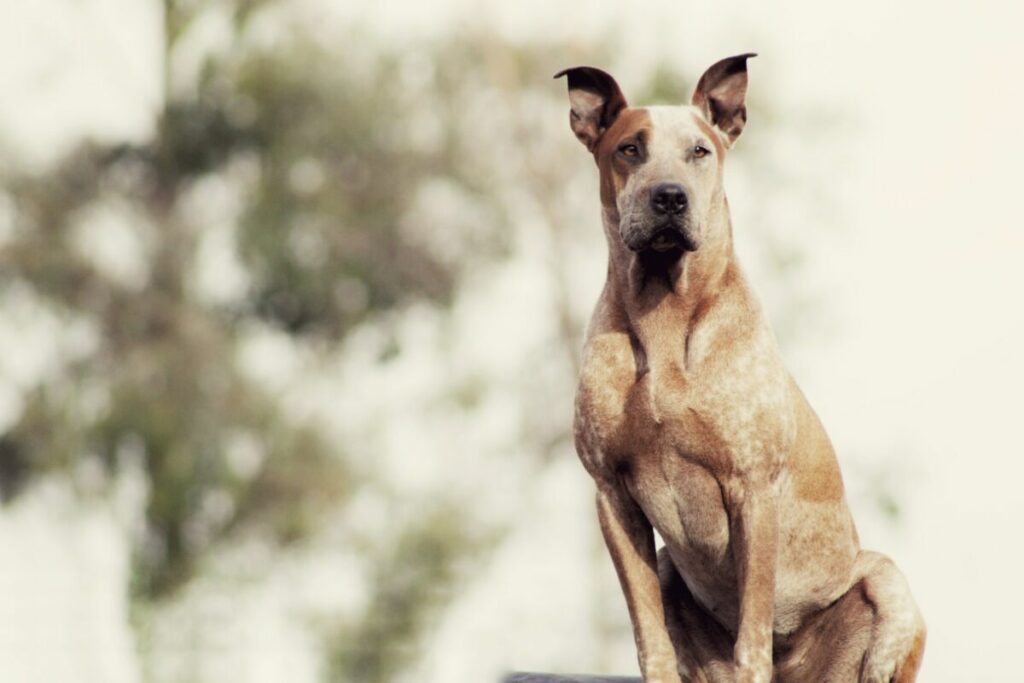
These lovable giants are often described as excellent companions due to their affectionate and sociable personalities. Most Great Danes get along well with other family pets and are especially gentle with children. However, early socialization and training are essential to ensure a harmonious relationship with other pets, as some may display dominance or aggression towards dogs of the same sex.
Caring for a Great Dane involves careful attention to its nutrition, exercise, and grooming. While they may shed moderately, regular brushing and bathing every 6-8 weeks can help maintain a healthy coat source. One significant consideration is their sheer size, which can make them less suitable for small living spaces or those unable to accommodate their physical needs.
Great Dane Overview
History and Origin
Great Danes, also known as the German Mastiff, have a rich history that traces back to Germany, and it is believed that the breed was developed from the English Mastiff and Irish Wolfhound. This large and powerful breed has been known as the “Apollo of Dogs” due to its elegant and imposing appearance. Great Danes were initially utilized for hunting and guarding, but as their temperament became more friendly, they transformed into gentle companion animals.
Size and Appearance
Great Danes are among the largest and tallest dog breeds in the world, with males reaching heights of up to 32 inches and weighing between 100 to 120 pounds, while females may be 30 inches tall and weigh about 100 to 120 pounds as well. Their defining features include a massive head that is narrow and flat on top, as well as long limbs that contribute to their imposing stature. The eyebrows are prominent, lending them a dignified expression.
Colors and Coat
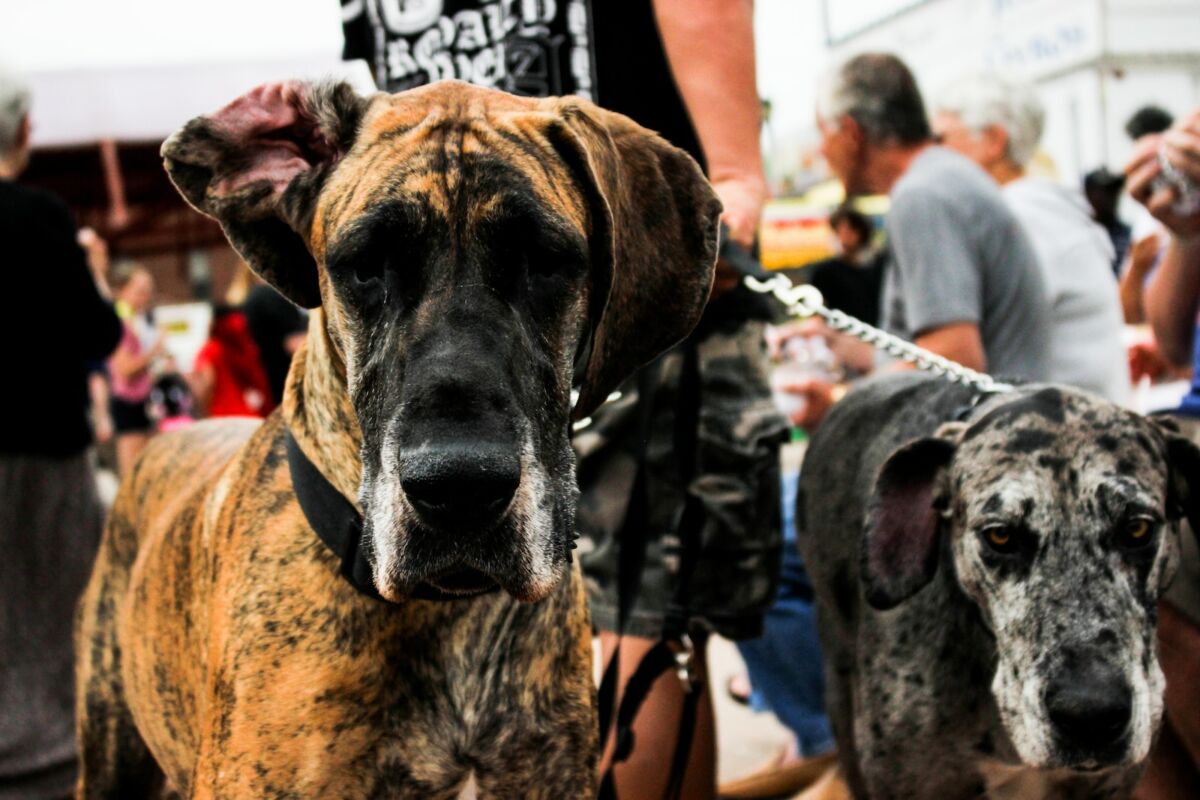
The Great Dane’s coat is short, thick, and smooth, making it relatively low-maintenance in terms of grooming. There are a variety of colors in which Great Danes can be found, including:
- Black
- Blue
- Brindle
- Fawn
- Harlequin
- Mantle
- Merle
Each color has distinct patterns and markings, adding to the breed’s diversity and appeal.
Great Dane Temperament
Personality Traits
Great Danes are known for their regal, intelligent, and loyal temperament. Despite their imposing size, their sweet and affectionate nature makes them ideal family pets. Their confidence and patience both contribute to their charm and appeal.
Gentle Giants
Often referred to as “gentle giants,” Great Danes are moderately playful and affectionate dogs, despite their large size. They get along well with other family pets but can sometimes be dominant or aggressive towards other dogs of the same sex. Proper socialization and training can help curb these tendencies and foster a more balanced temperament.
Interaction with Children
Great Danes are known to be good with children, displaying a level of patience and gentleness that makes them great companions for kids. However, their size can be overwhelming for smaller children. Hence, supervision and teaching children how to interact appropriately with such a large dog breed are important to ensure the child’s and the dog’s safety.
In summary, the Great Dane’s temperament is characterized by affection, loyalty, and patience, making them suitable family pets and delightful companions. Their gentle nature and ability to get along with children further solidify their position as a beloved dog breed.
Training and Obedience
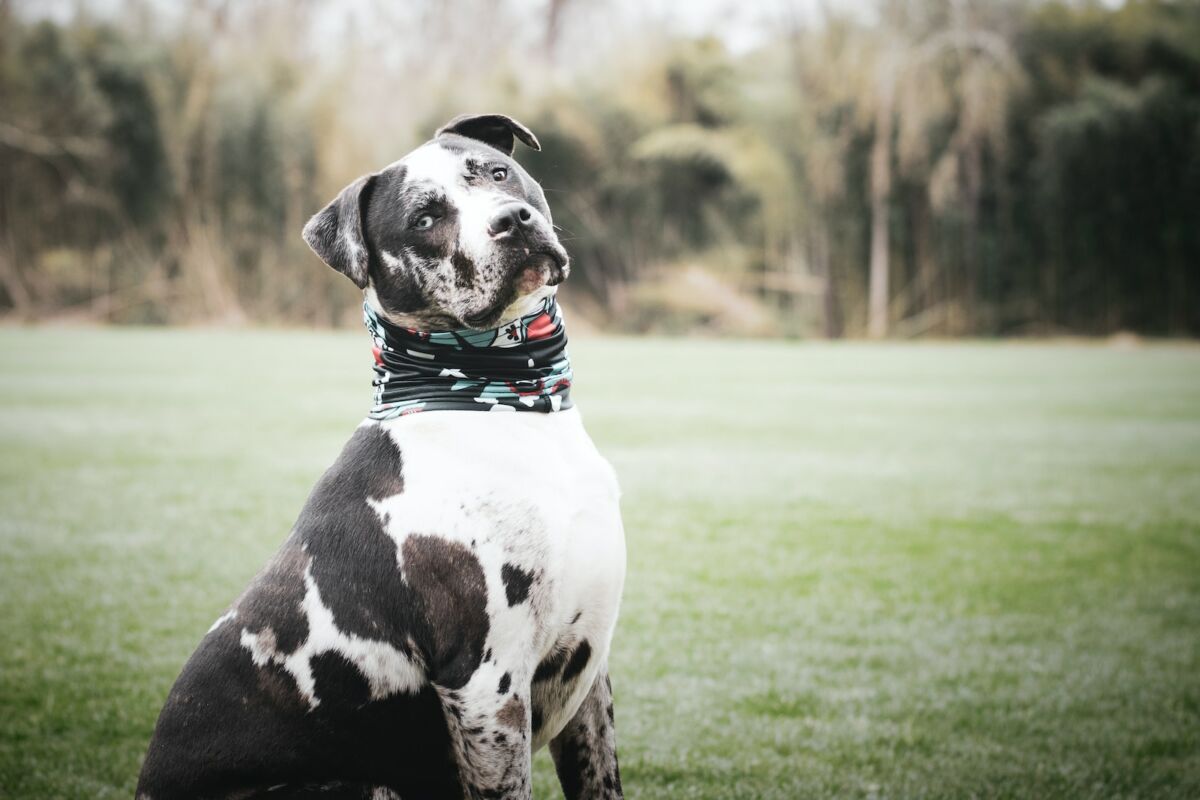
Importance of Training
Training is crucial for Great Danes, as their large size can introduce complications. A well-trained Great Dane is easier to manage and will live an optimally healthy and happy life. Since they are powerful and large dogs, obedience training is essential to control their potentially dominant or pushy behavior. Training should be done with patience and cheerful methods, as Great Danes are very sensitive dogs.
Socialization
Socialization is a vital aspect of training during a Great Dane’s early days to develop their social skills. Introducing your puppy to various people, places, and experiences will help them grow into a well-rounded, confident adult dog. This process should be done gently since Great Danes are sensitive and can become distrustful if exposed to harsh or negative experiences.
Obedience Training
Enrolling Great Dane puppies in obedience classes is an excellent way to instill good behavior throughout their lives. They are generally considered easy to train but can be stubborn with some specific training exercises. Obedience training should focus on basic commands like sit, stay, and come. Being consistent and using positive reinforcement training methods will help your Great Dane become a well-behaved, obedient companion.
Potential Behavior Issues
While Great Danes are known for their loving nature and friendly personality, they may exhibit potential behavior issues if not properly trained. Some Great Danes can be peaceful with other pets, while others are dominant and pushy.
Aggression is not common in Great Danes, but if left unchecked, a strong-willed Great Dane could become a challenge to manage. To avoid such issues, it’s essential to reinforce proper behavior, socialization, and obedience from a young age and show commitment to your dog’s training.
In summary, training and obedience are crucial aspects of raising a well-behaved Great Dane. By focusing on socialization, obedience training, and addressing potential behavior issues, a Great Dane can become a loving and friendly family pet.
Exercise and Mental Stimulation
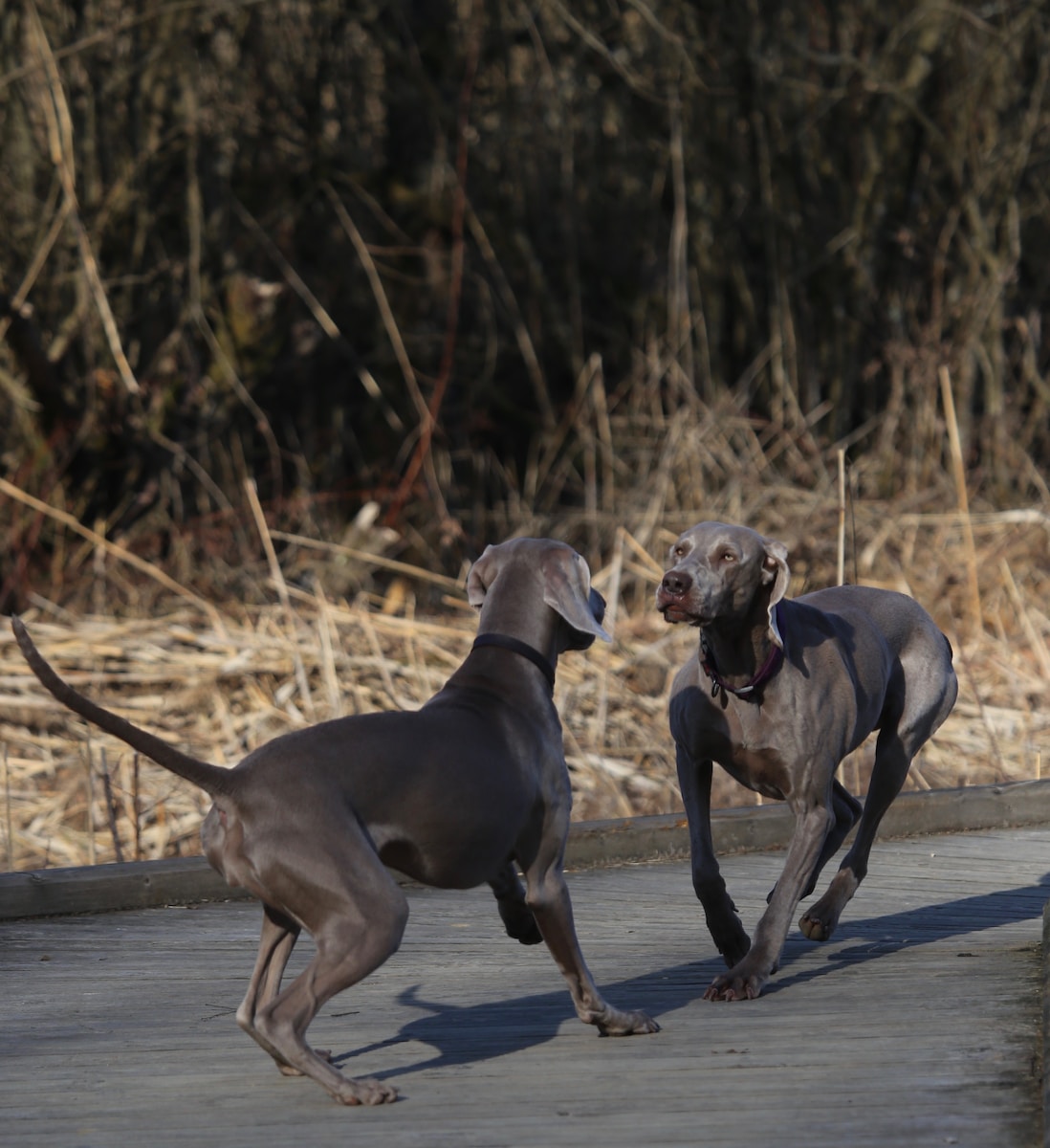
Physical Activity Requirements
Great Danes require moderate exercise to keep them physically fit and mentally stimulated. Appropriate forms of exercise for these gentle giants include walking, playing games, trips to the dog park, hiking, swimming, and agility sports. On average, Great Danes need about 2 hours of daily exercise to remain healthy. Regular exercise maintains their physical health and stimulates them mentally, promoting better mental health and preventing boredom, which could lead to unwelcome behavior.
- Walking: Daily walks are essential for your Great Dane. Mix it up with different routes and speeds to keep it engaging and challenging.
- Dog park visits: Allow your Great Dane to socialize with other dogs, increasing their social skills and adding variety to their exercise routine.
- Swimming: If your Great Dane enjoys water, swimming can be an excellent low-impact exercise option.
Mental Exercise and Enrichment
Great Danes benefit from mental stimulation and enrichment, which can help burn as much energy as physical exercise. Engaging their minds helps prevent boredom that could lead to undesirable behavior.
- Puzzle toys: These toys challenge your Great Dane to solve a puzzle to access treats, exercising their problem-solving skills.
- Interactive games: Play hide and seek, fetch, or tug of war with your Great Dane to engage their minds while providing physical activity.
- Training sessions: Teach your Great Dane new tricks and commands, reinforcing obedience and stimulating its intellect.
Incorporate physical activity and mental stimulation in your Great Dane’s routine to ensure overall well-being. These gentle giants can be wonderful pets with the proper care and attention to their exercise and enrichment needs.
Health and Longevity
Common Health Issues
Like any large breed dog, Great Danes can be prone to certain health issues. Some of the common health problems they may face include:
- Bloat: A life-threatening condition caused by the twisting of the stomach, common in deep-chested breeds.
- Dilated Cardiomyopathy: A heart disease that affects the muscle of the heart, causing it to become weak and unable to pump blood properly.
- Hip Dysplasia: A genetic condition where the hip joint doesn’t develop properly, leading to arthritis and pain.
- Wobbler Syndrome: A neurological disorder affecting the neck and spine, causing weakness and wobbling while walking.
Life Expectancy
The average lifespan of a Great Dane is between 8 to 10 years. Some may live only 6 or 7 years, while others may reach up to 12 years of age. This shorter lifespan is typical for larger dog breeds.
Proper Nutrition
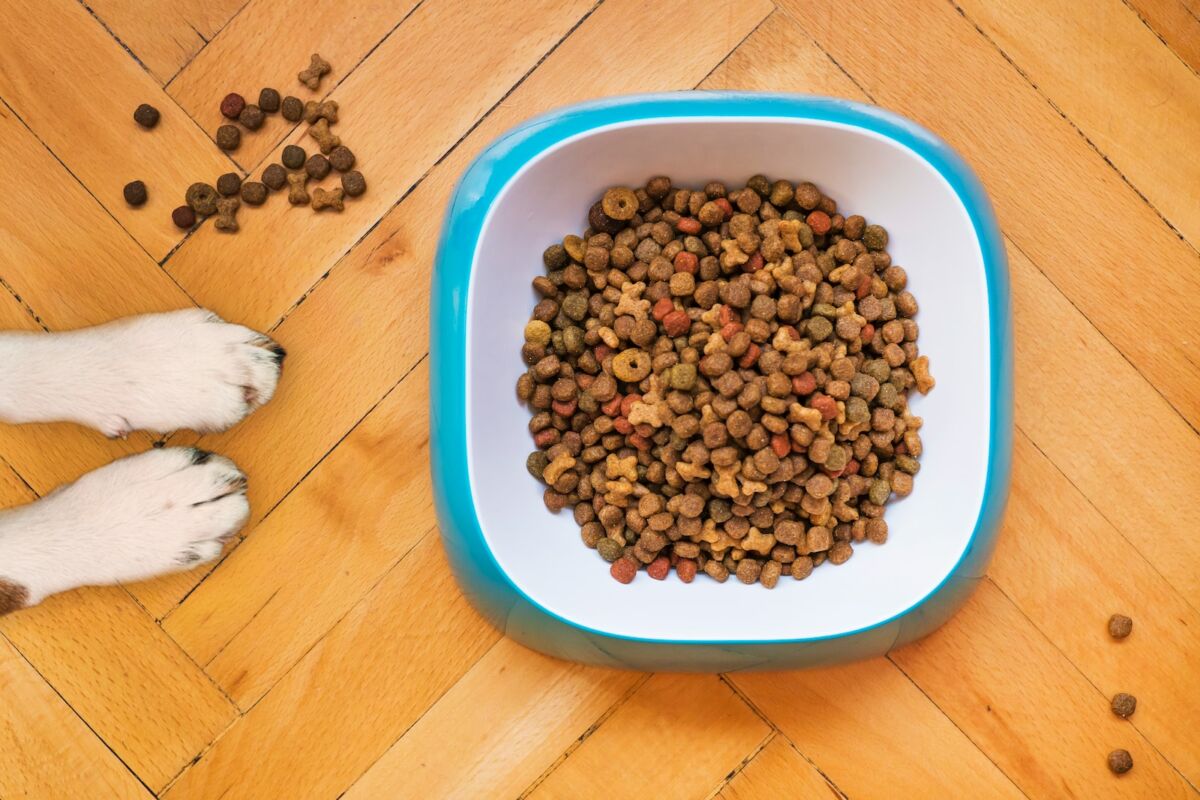
Proper nutrition is essential for Great Danes, as they are prone to obesity and related health issues. Feeding high-quality, large-breed puppy food is necessary for proper growth and development. Be sure to monitor your Great Dane’s weight and adjust its food intake accordingly to prevent obesity.
Some tips for proper nutrition include:
- Feed smaller, more frequent meals to reduce the risk of bloat.
- Monitor weight and adjust food portions accordingly.
- Provide fresh water at all times.
Grooming Needs
Great Danes have a single coat with short hair and moderate shedding. To maintain their coat and overall hygiene, follow these grooming tips:
- Brush your Great Dane’s coat weekly to remove dead hair and distribute natural oils.
- Bathe your dog every 6-8 weeks or as needed.
- Trim their nails regularly to prevent overgrowth and discomfort.
- Clean their ears monthly with a dog-specific ear cleaner to prevent infections.
- Brush their teeth regularly to maintain good dental health.
Acquiring a Great Dane
Finding a Reputable Breeder
When looking to acquire a Great Dane puppy, finding a reputable breeder is crucial. A reliable breeder will prioritize the health and temperament of their puppies and will provide you with the necessary information about the breed. Some useful steps to take include:
- Researching local breeders or Great Dane clubs for recommendations
- Visiting the breeder’s location to observe the environment where the puppies are raised
- Requesting to see the health records of the puppy’s parents
- Ensuring the breeder is following ethical breeding practices by checking for registration with a breeding organization
Cost Factors
Ownership of any pet entails various expenses. For Great Danes, some factors that impact the overall cost include:
- The cost of acquiring the puppy itself, which can range between $600 and $3,000 depending on lineage and breeder reputation
- The lifetime cost of pet insurance, averaging around $70 per month
- Food costs, because Great Danes require quality nutrition due to their large size
- Vet expenses, as large breeds are more prone to certain health issues
Age and Size Considerations
When adopting a Great Dane, consider the age and size of the dog. Puppies usually come at a high energy level and need socialization, while adult dogs might require time to adjust to a new environment. Some factors to keep in mind include:
- The average height for males is 30-34 inches, and for females, it is 28-32 inches
- Weight can range from 100-200 pounds, depending on gender and individual differences
- Great Danes grow rapidly in their first year, so expect them to reach their adult size within 12-18 months
Consider your living situation and level of commitment when acquiring a Great Dane, as they require proper attention to their nutrition, exercise, and grooming.
Making a Great Dane Your Pet
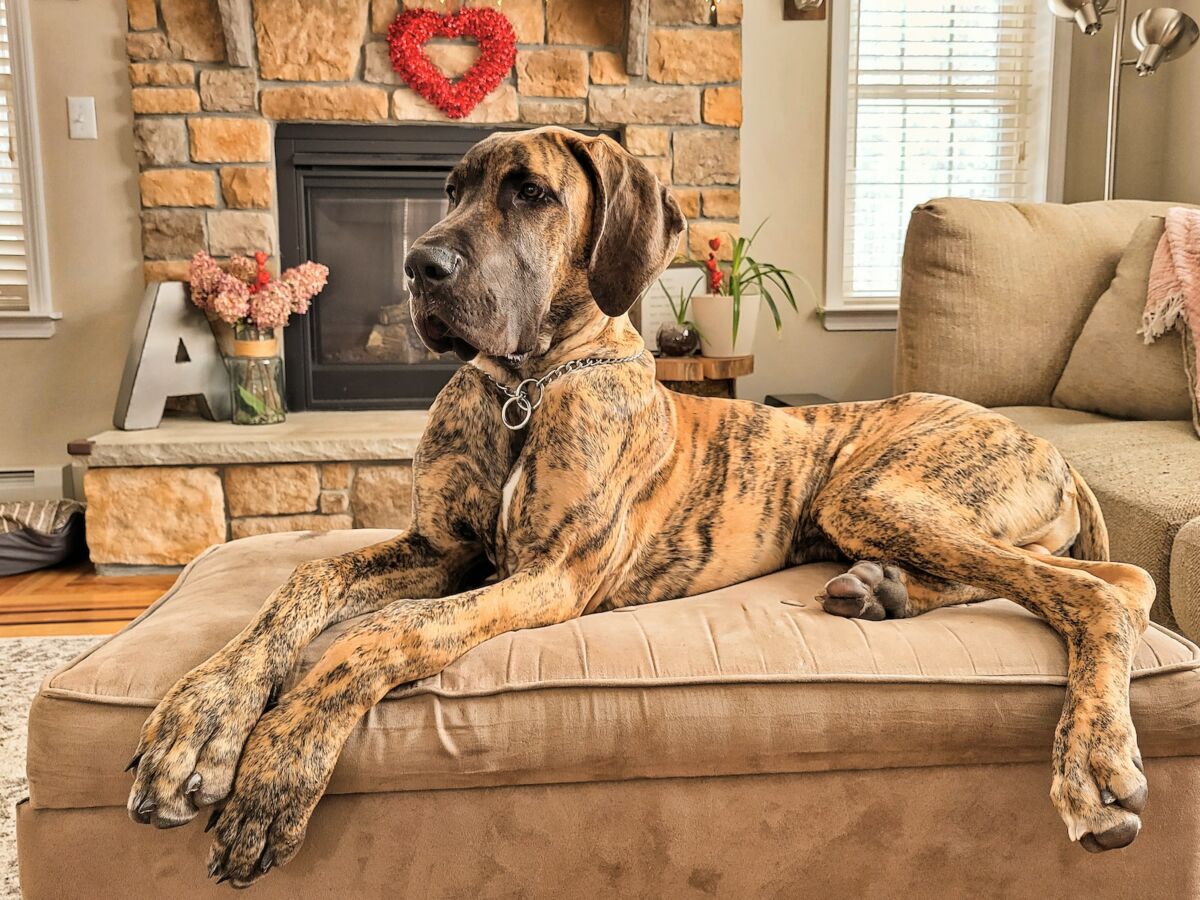
Living Space and Environment
Great Danes are known for their large size, so providing them with enough space to move comfortably is essential. Ideally, they should have access to a decent-sized yard where they can roam and play. However, Great Danes can also adapt to living in smaller spaces, such as apartments, if they receive adequate exercise and opportunities to stretch their legs.
Due to their short coats and low body fat, Great Danes might be sensitive to cold temperatures. Provide them with a warm, comfortable living environment, and consider getting them a sweater or coat for chilly outdoor days.
Relationship with Other Pets
Great Danes are generally good with other animals and can coexist peacefully in multi-pet households. They are known for their gentle nature and friendly personality, which tends to extend to their relationship with other pets. Early socialization can help foster strong bonds, especially if the pets were raised together.
Supervising your Great Dane when they play with smaller animals or pets is crucial, as their large size may inadvertently cause harm during playtime, despite their gentle nature.
Potential Drawbacks
There are, however, several factors to consider before welcoming a Great Dane into your family. Some potential drawbacks include:
- Size: Their large size poses complications, such as finding suitable living space and transportation. Additionally, they may require more food and incur higher healthcare and grooming expenses.
- Drooling: Great Danes are known for their excessive drooling and slobber, which might be unpleasant and challenging to manage.
- Lifespan: Due to their size, these dogs tend to have a shorter life span than other breeds; on average, they live for 7-10 years.
- Training: While Great Danes inherently desire to please their owners, they are not pushovers to raise and train. Consistency and persistence are essential; it is crucial to start training early to avoid facing stubbornness and dominance issues later.
By considering these factors, you can ensure that a Great Dane is a suitable pet for your family and create a happy, comfortable environment for your new companion.